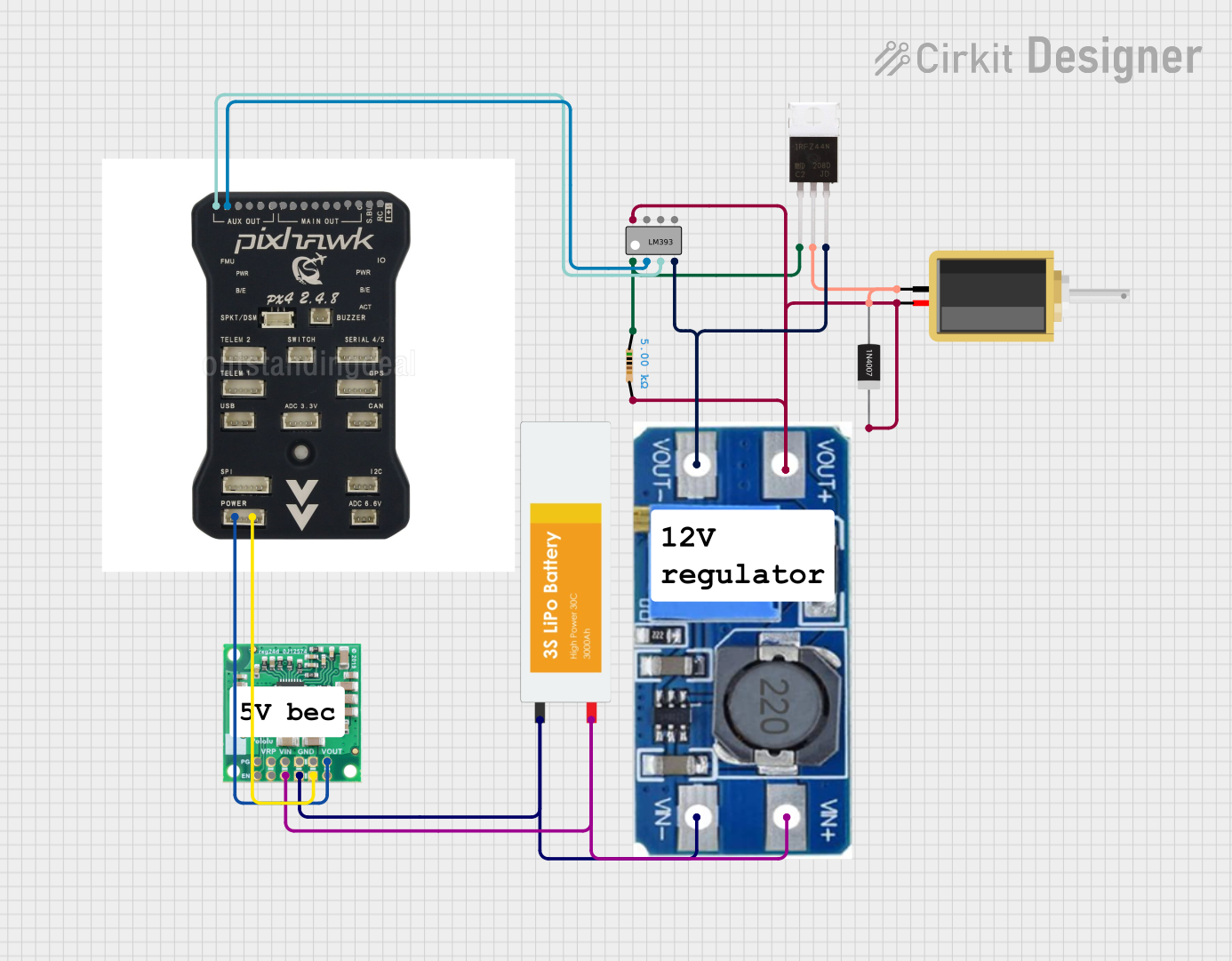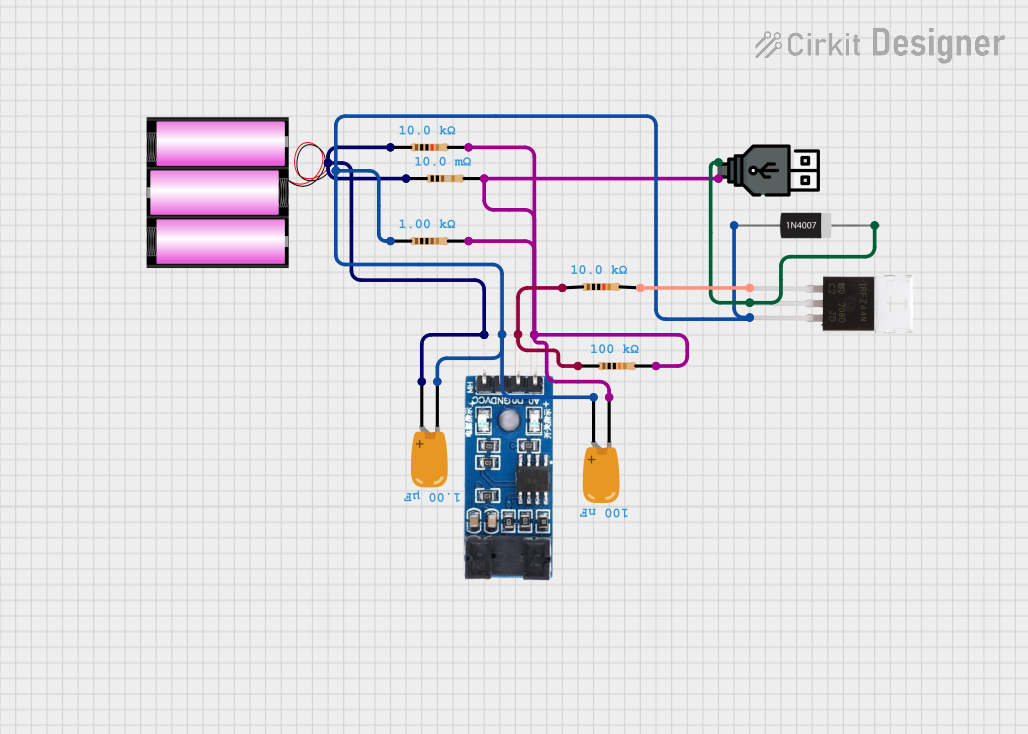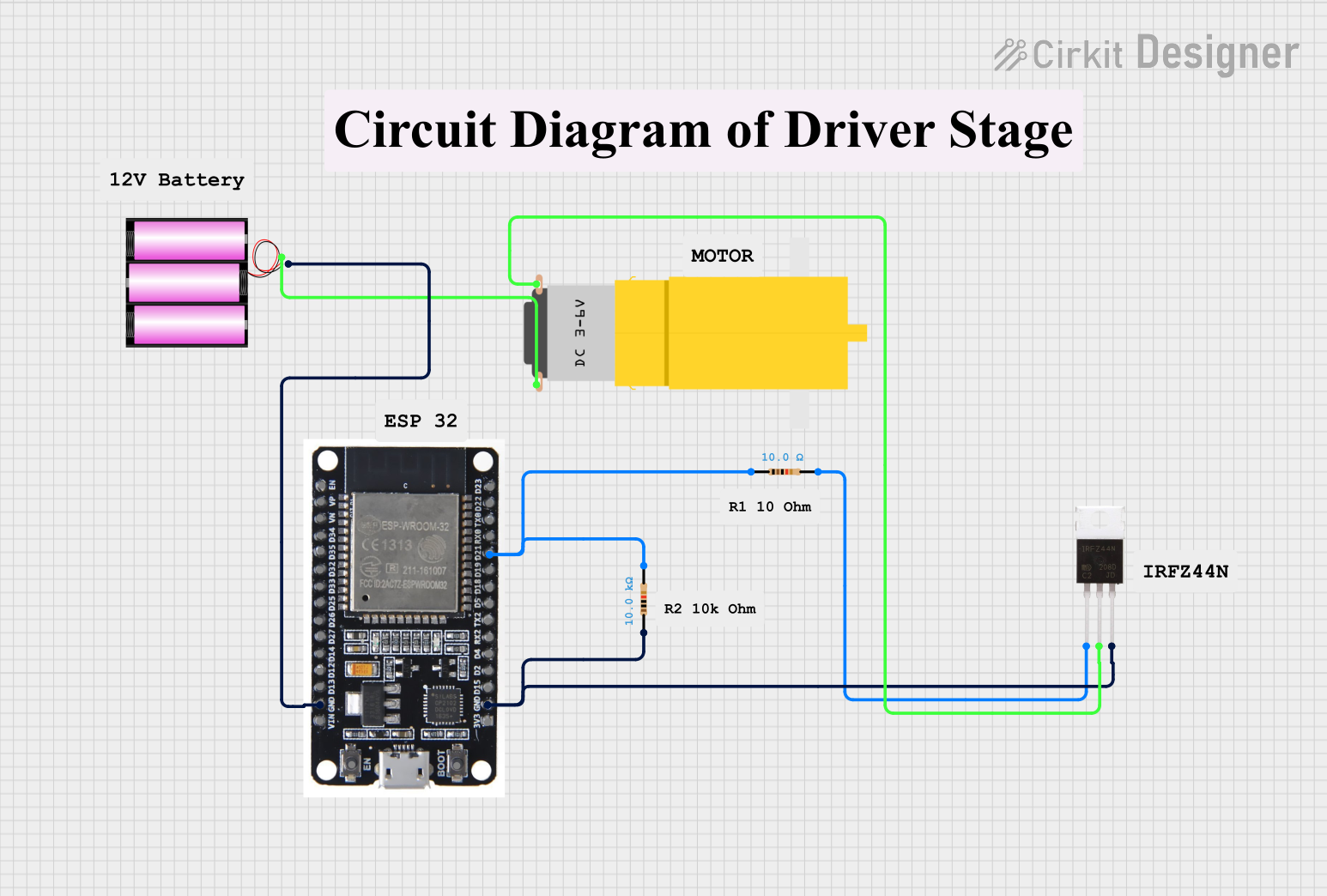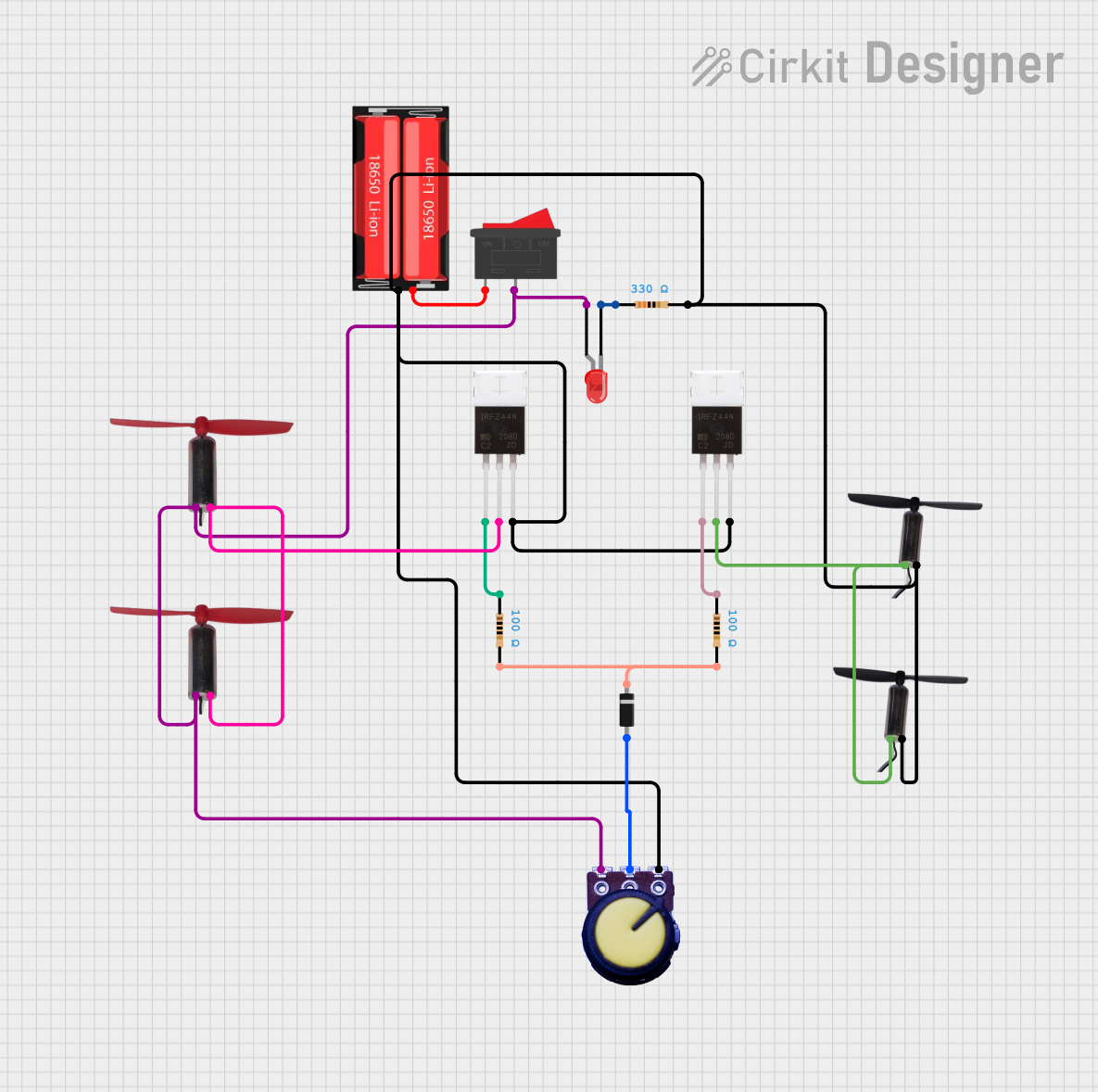
How to Use Mosfet IRF4905: Examples, Pinouts, and Specs

 Design with Mosfet IRF4905 in Cirkit Designer
Design with Mosfet IRF4905 in Cirkit DesignerIntroduction
The IRF4905 is a P-channel MOSFET designed for high-speed switching applications. It features a low on-resistance, high voltage rating, and robust thermal performance, making it ideal for use in power management circuits, motor control, and DC-DC converters. Its ability to handle high currents and voltages ensures reliable operation in demanding environments.
Explore Projects Built with Mosfet IRF4905

 Open Project in Cirkit Designer
Open Project in Cirkit Designer
 Open Project in Cirkit Designer
Open Project in Cirkit Designer
 Open Project in Cirkit Designer
Open Project in Cirkit Designer
 Open Project in Cirkit Designer
Open Project in Cirkit DesignerExplore Projects Built with Mosfet IRF4905

 Open Project in Cirkit Designer
Open Project in Cirkit Designer
 Open Project in Cirkit Designer
Open Project in Cirkit Designer
 Open Project in Cirkit Designer
Open Project in Cirkit Designer
 Open Project in Cirkit Designer
Open Project in Cirkit DesignerCommon Applications:
- Power management circuits
- Motor control systems
- DC-DC converters
- Battery protection circuits
- Load switching in high-power systems
Technical Specifications
Below are the key technical details of the IRF4905 MOSFET:
| Parameter | Value |
|---|---|
| Type | P-Channel MOSFET |
| Maximum Drain-Source Voltage (VDS) | -55V |
| Maximum Gate-Source Voltage (VGS) | ±20V |
| Continuous Drain Current (ID) | -74A (at 25°C) |
| Pulsed Drain Current (IDM) | -260A |
| Power Dissipation (PD) | 200W (at 25°C) |
| On-Resistance (RDS(on)) | 0.02Ω (typical) |
| Gate Threshold Voltage (VGS(th)) | -2V to -4V |
| Operating Temperature Range | -55°C to +175°C |
| Package Type | TO-220AB |
Pin Configuration
The IRF4905 is typically available in a TO-220AB package with three pins. The pinout is as follows:
| Pin Number | Pin Name | Description |
|---|---|---|
| 1 | Gate (G) | Controls the MOSFET switching state |
| 2 | Drain (D) | Current flows into this terminal |
| 3 | Source (S) | Current flows out of this terminal |
Usage Instructions
How to Use the IRF4905 in a Circuit
- Gate Control: Apply a voltage to the Gate (G) to control the MOSFET's switching state. For the IRF4905, the Gate voltage must be negative relative to the Source to turn it on.
- Drain-Source Current Flow: When the Gate is sufficiently negative (e.g., -10V), the MOSFET allows current to flow from the Source (S) to the Drain (D).
- Load Connection: Connect the load between the Drain (D) and the positive supply voltage. The Source (S) is connected to the ground or negative terminal of the power supply.
Important Considerations
- Gate Drive Voltage: Ensure the Gate-Source voltage (VGS) does not exceed ±20V to avoid damaging the MOSFET.
- Heat Dissipation: Use a heatsink or proper thermal management to handle the power dissipation, especially in high-current applications.
- Flyback Diode: When switching inductive loads (e.g., motors), include a flyback diode to protect the MOSFET from voltage spikes.
- Gate Resistor: Use a resistor (e.g., 10Ω) in series with the Gate to limit inrush current and prevent oscillations.
Example: Using the IRF4905 with an Arduino UNO
The IRF4905 can be controlled by an Arduino UNO to switch a load. Below is an example circuit and code:
Circuit:
- Connect the Source (S) to the ground.
- Connect the Drain (D) to one terminal of the load.
- Connect the other terminal of the load to the positive supply voltage.
- Connect the Gate (G) to a PWM-capable pin on the Arduino (e.g., pin 9) through a 10Ω resistor.
Code:
// Example code to control the IRF4905 with an Arduino UNO
// This code uses PWM to control the brightness of an LED connected to the MOSFET
const int mosfetGatePin = 9; // Pin connected to the Gate of the IRF4905
void setup() {
pinMode(mosfetGatePin, OUTPUT); // Set the Gate pin as an output
}
void loop() {
// Gradually increase brightness
for (int dutyCycle = 0; dutyCycle <= 255; dutyCycle++) {
analogWrite(mosfetGatePin, dutyCycle); // Write PWM signal to Gate
delay(10); // Small delay for smooth transition
}
// Gradually decrease brightness
for (int dutyCycle = 255; dutyCycle >= 0; dutyCycle--) {
analogWrite(mosfetGatePin, dutyCycle); // Write PWM signal to Gate
delay(10); // Small delay for smooth transition
}
}
Notes:
- The Arduino's PWM output is 0-5V, which may not fully turn off the IRF4905. Use a level shifter or a driver circuit if needed.
- Ensure the load's current and voltage are within the MOSFET's ratings.
Troubleshooting and FAQs
Common Issues
MOSFET Not Switching Properly:
- Cause: Insufficient Gate-Source voltage.
- Solution: Ensure the Gate voltage is sufficiently negative (e.g., -10V) relative to the Source.
Excessive Heat:
- Cause: High current or inadequate cooling.
- Solution: Use a heatsink or improve thermal management.
MOSFET Damage:
- Cause: Exceeding voltage or current ratings.
- Solution: Verify that the circuit operates within the MOSFET's specifications.
Oscillations or Noise:
- Cause: Lack of a Gate resistor.
- Solution: Add a resistor (e.g., 10Ω) in series with the Gate.
FAQs
Q1: Can the IRF4905 be used for high-frequency switching?
A1: Yes, the IRF4905 is suitable for high-frequency switching, but ensure proper Gate drive circuitry to minimize switching losses.
Q2: Can I use the IRF4905 with a 3.3V microcontroller?
A2: No, the IRF4905 requires a negative Gate-Source voltage to turn on. Use a level shifter or a dedicated MOSFET driver.
Q3: What is the maximum load current the IRF4905 can handle?
A3: The IRF4905 can handle up to -74A continuously at 25°C, but ensure proper cooling to avoid overheating.
Q4: Do I need a flyback diode for inductive loads?
A4: Yes, a flyback diode is essential to protect the MOSFET from voltage spikes caused by inductive loads.